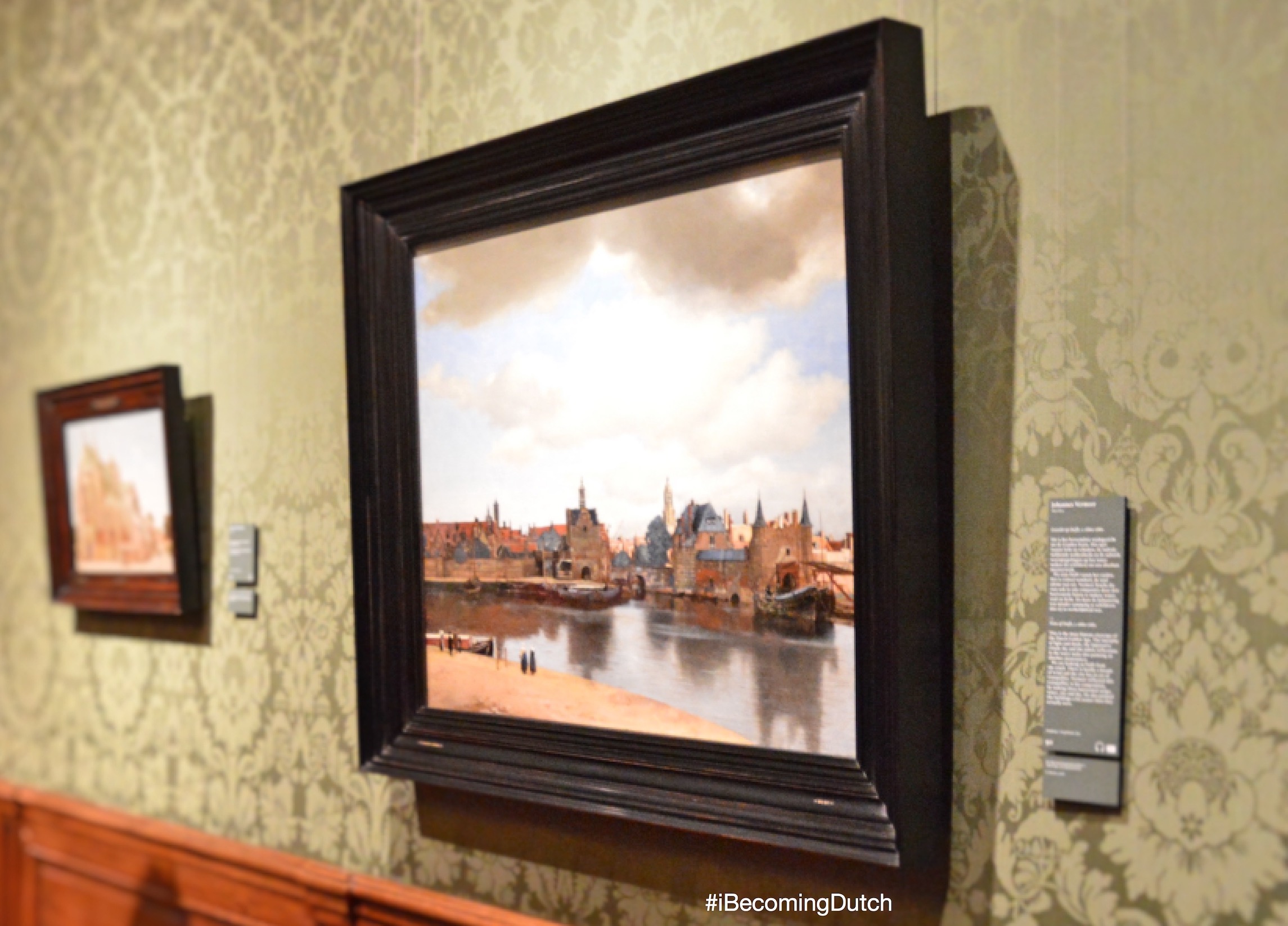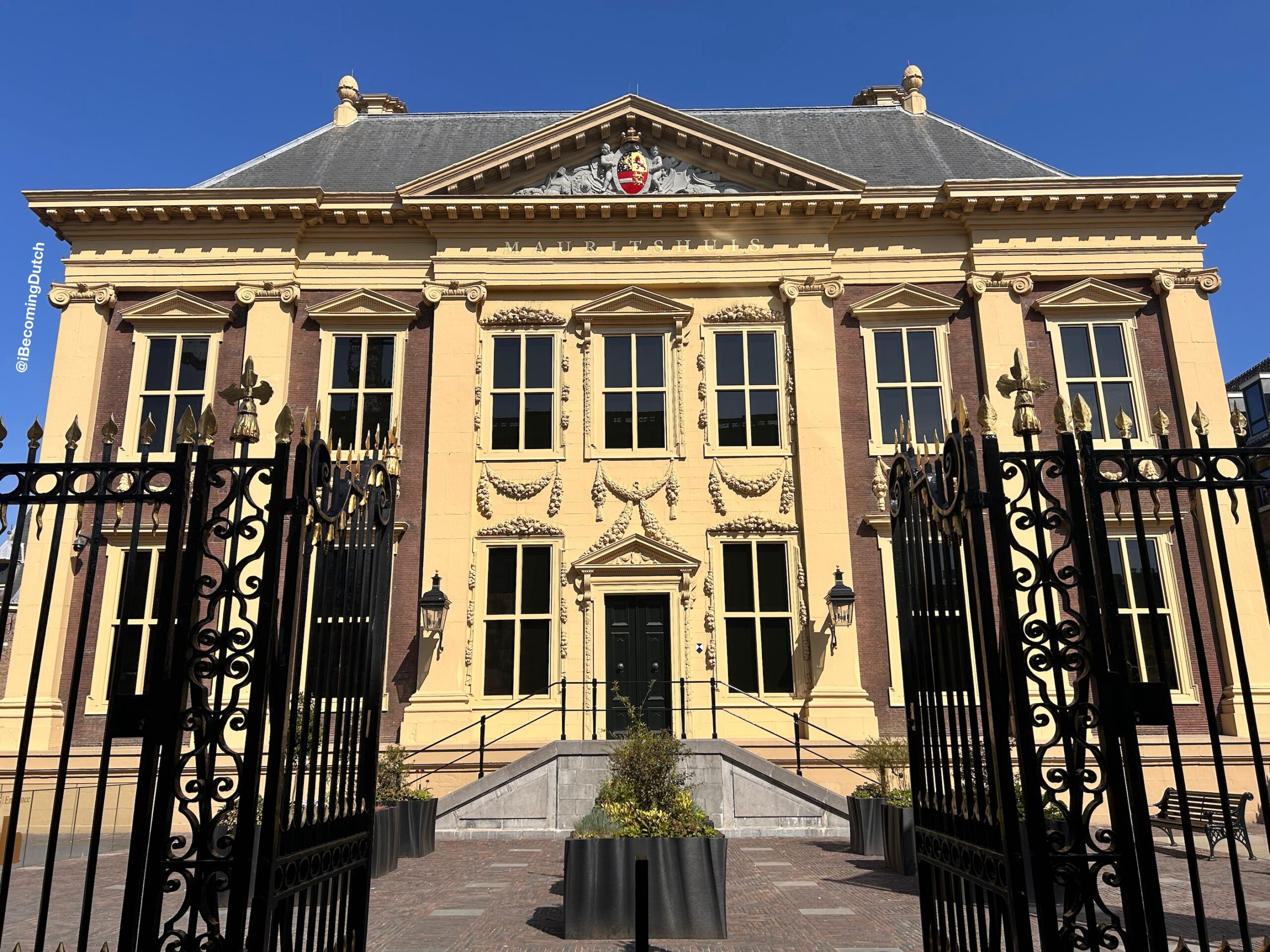
This is the Royal Picture Gallery Mauritshuis. It was built in the seventeenth century as a private residence for Count Johan Maurits of Nassau-Siegen (17 June 1604 – 20 December 1679). Thus, Mauritshuis or Maurits’ House, when translated.
Maurits was the governor-general of the Dutch colony in the South American country, Dutch Brazil, when he commended this house to be erected. The two-storey strictly symmetrical building was built in the Dutch Classicist style by the architect Jacob van Campen, who was assisted by Pieter Post for the interior finishes.
The Mauritshuis was often derogatively called the Sugar Palace, in reference of his income trading in sugar and slavery.

In 1704, the interior was mostly destroyed by a fire. It was rebuilt between 1708 and 1718. By 1820, the Mauritshuis was bought by the Dutch state for the purpose of housing the Royal Cabinet of Paintings, containing core paintings collection brought together by stadholder William V, Prince of Orange. It became a museum, opened to the public in 1822
Presently, the art museum of Mauritshuis houses mostly Dutch Golden Age paintings. You can admire famous works by Johannes Vermeer, Rembrandt van Rijn, Jan Steen, Paulus Potter, Frans Hals, Jacob van Ruisdael, Hans Holbein, and others.
Here are 15 paintings you must see at Mauritshuis:
- Adriaen Thomasz Key – Portrait of William I (1533 – 1584), Prince of Orange, 1579.
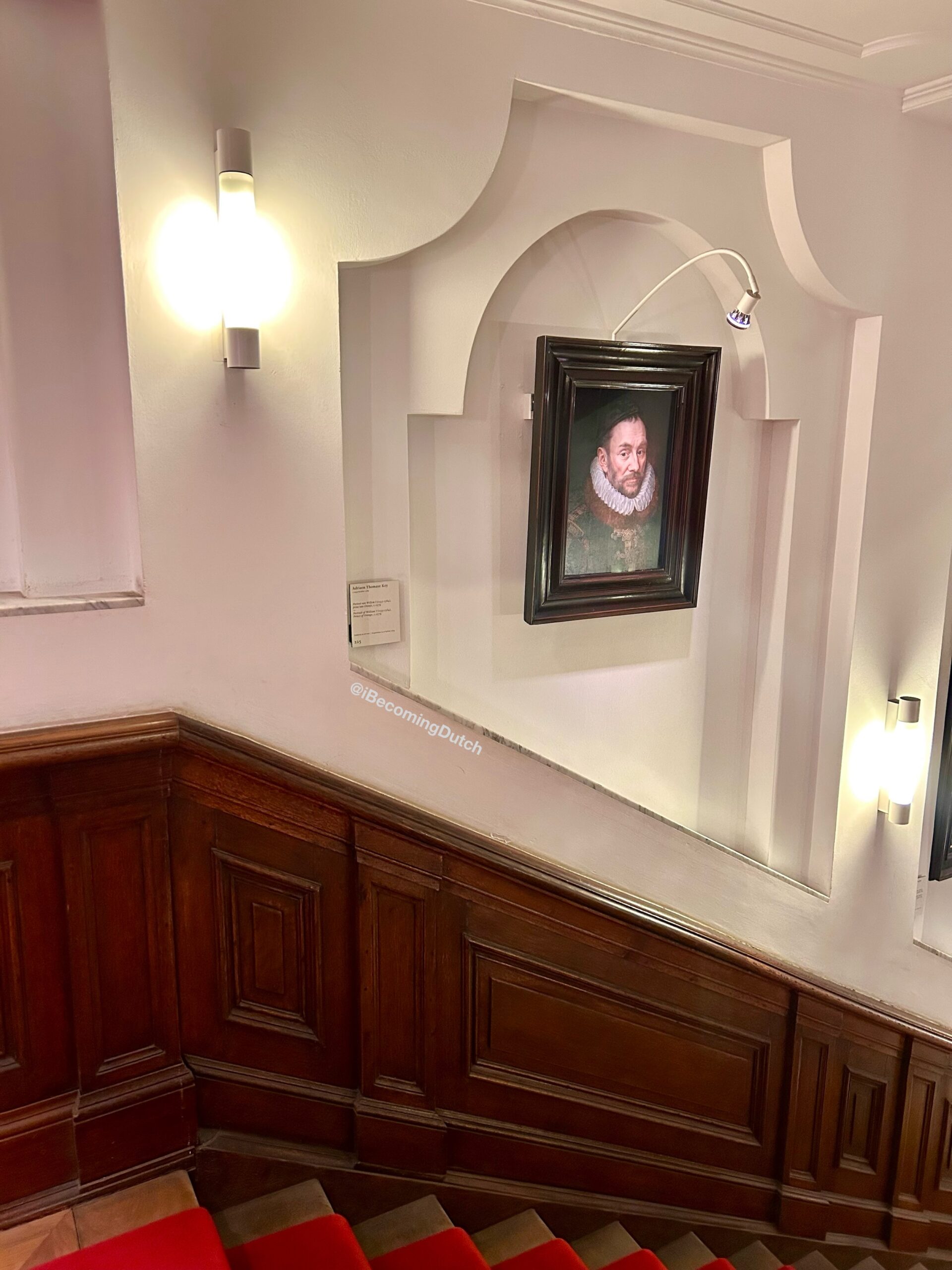 There are at least three of such known versions by Adriaen. The likeness of the prince has become iconic. One of the finest portraits of the Father of the Fatherland.
There are at least three of such known versions by Adriaen. The likeness of the prince has become iconic. One of the finest portraits of the Father of the Fatherland.
On view in📍Room 1 staircase (painting 225)
- Paulus Potter – The Bull, 1647.
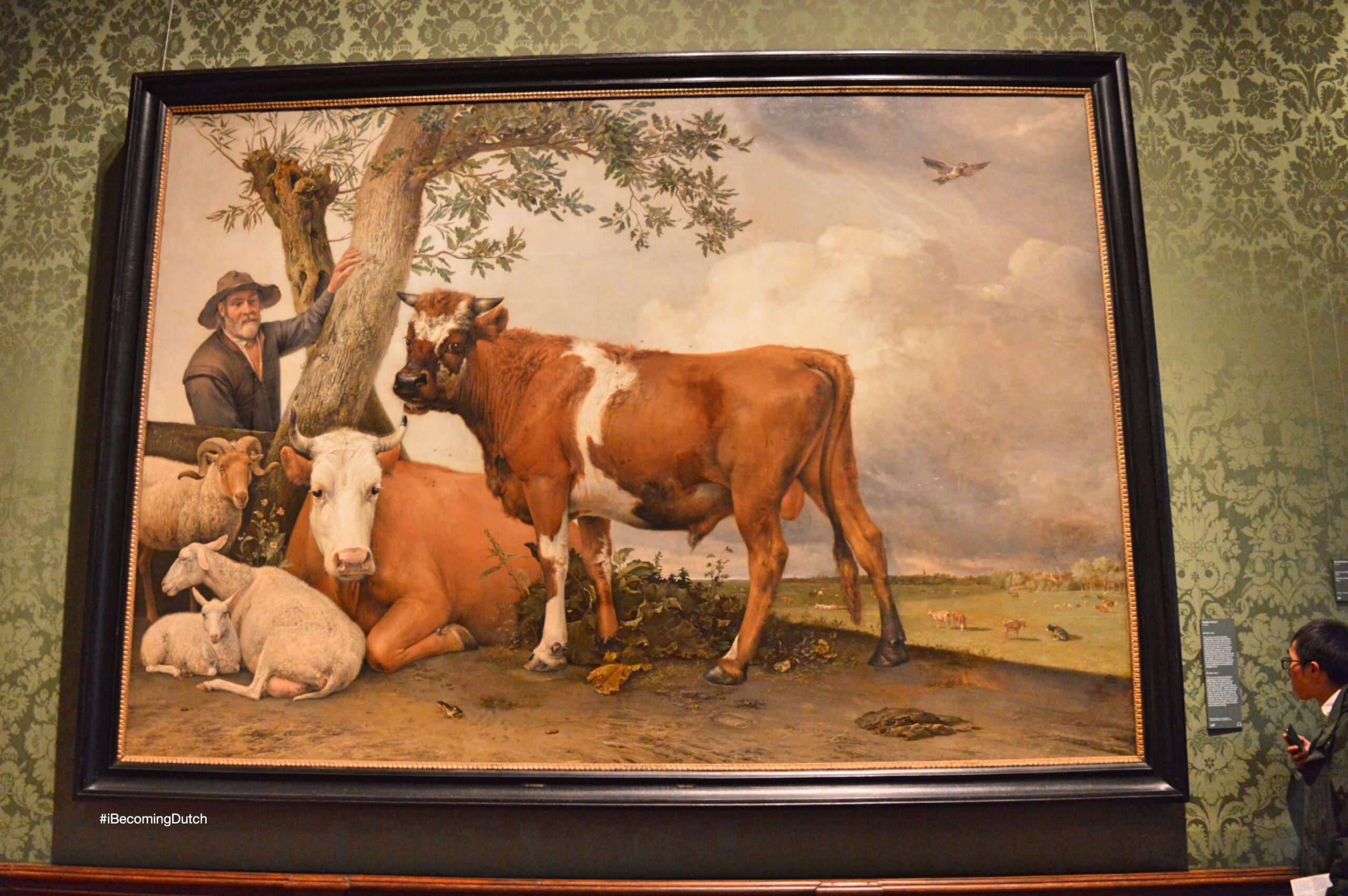 A true Dutch nature painting on a grand scale! It is life size showing intricate details of the cow’s whiskers and flies resting on the bull’s back. For a second, you would forget this is just a painting. Life-size livestock comes alive in a museum!
A true Dutch nature painting on a grand scale! It is life size showing intricate details of the cow’s whiskers and flies resting on the bull’s back. For a second, you would forget this is just a painting. Life-size livestock comes alive in a museum!
Currently in Restoration but usually on view in📍Room 2 (painting 136)

From the restauration project, I learnt that Paulus painted this when he was only 22. He painted a quintessentially Dutch scene on a massive canvas measuring 235.5 x 339 cm. He died seven years after finishing this painting, at the age of just 28.
- Peter Paul Rubens – Old Woman and Boy with Candles, c. 1616 – 1617.
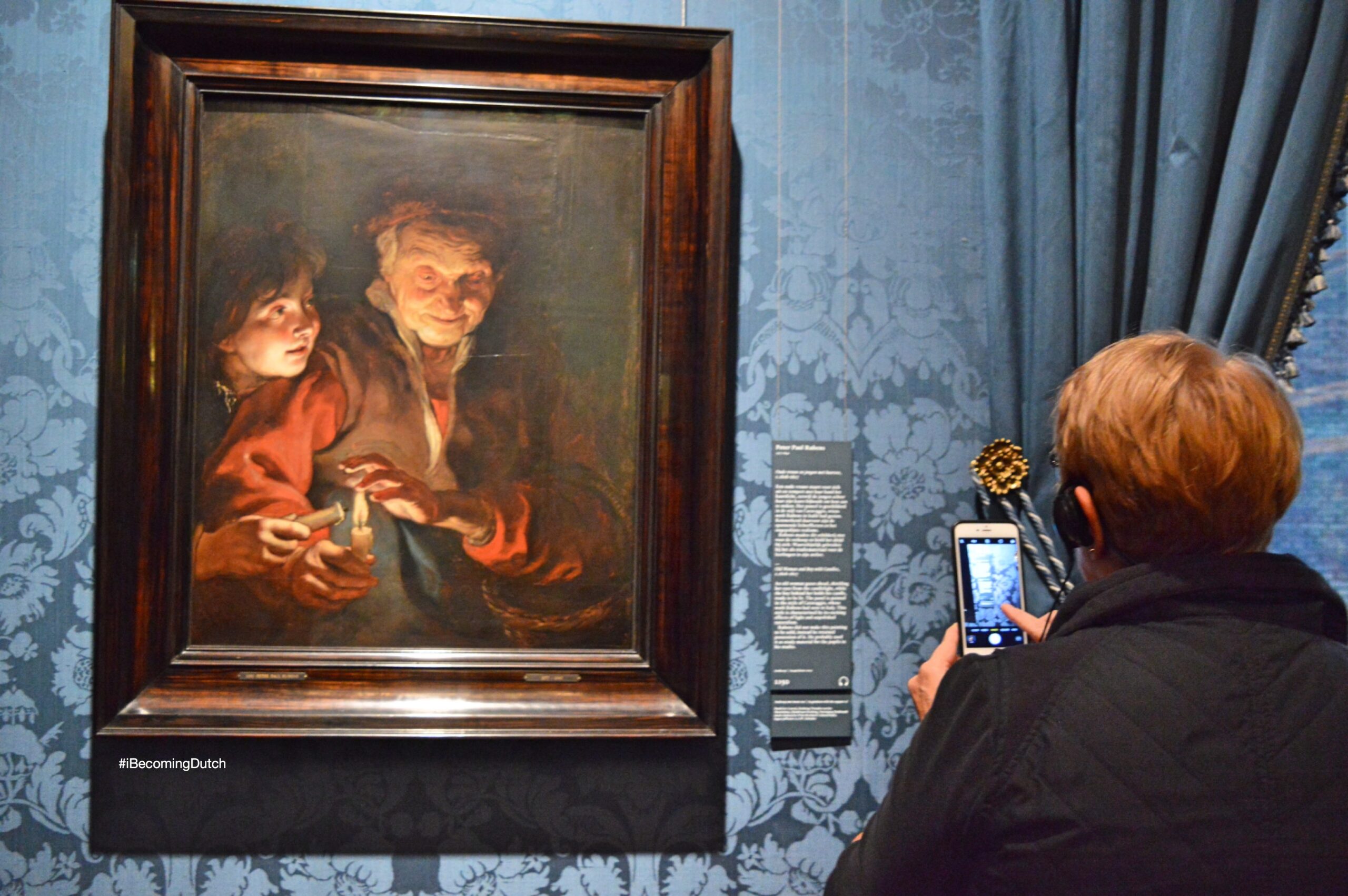 A painting portraying an old woman holding her lit candle and shielding it when a young boy leans over her shoulder to share her flame.
A painting portraying an old woman holding her lit candle and shielding it when a young boy leans over her shoulder to share her flame.
The shimmering candlelight illuminates both faces of the elderly woman and the boy melodramatically. A gesture which represents the passing of wisdom. I can relate.
On view in📍Room 3 (painting 1150)
- Antoon François Heijligers – Interior of the Rembrandt Room in the Mauritshuis in 1884, 1884.
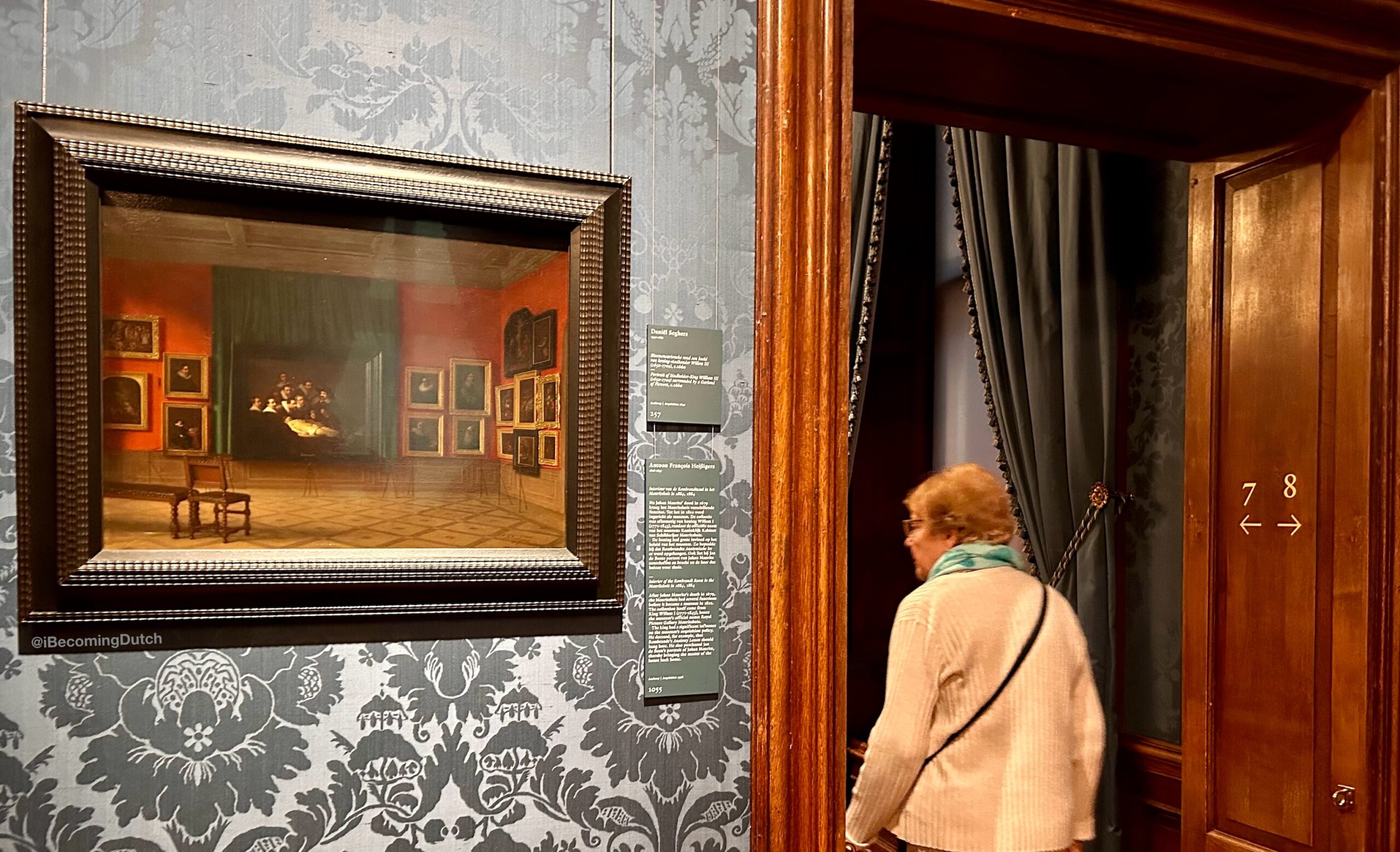 Showcasing Mauritshuis when it became a museum in 1822 featuring Rembrandt’s The Anatomy Lesson of Dr Nicolaes Tulp on its wall.
Showcasing Mauritshuis when it became a museum in 1822 featuring Rembrandt’s The Anatomy Lesson of Dr Nicolaes Tulp on its wall.
On view in📍Room 8 (painting 1055)
- Rembrandt van Rijn – The Anatomy Lesson of Dr Nicolaes Tulp, 1632.
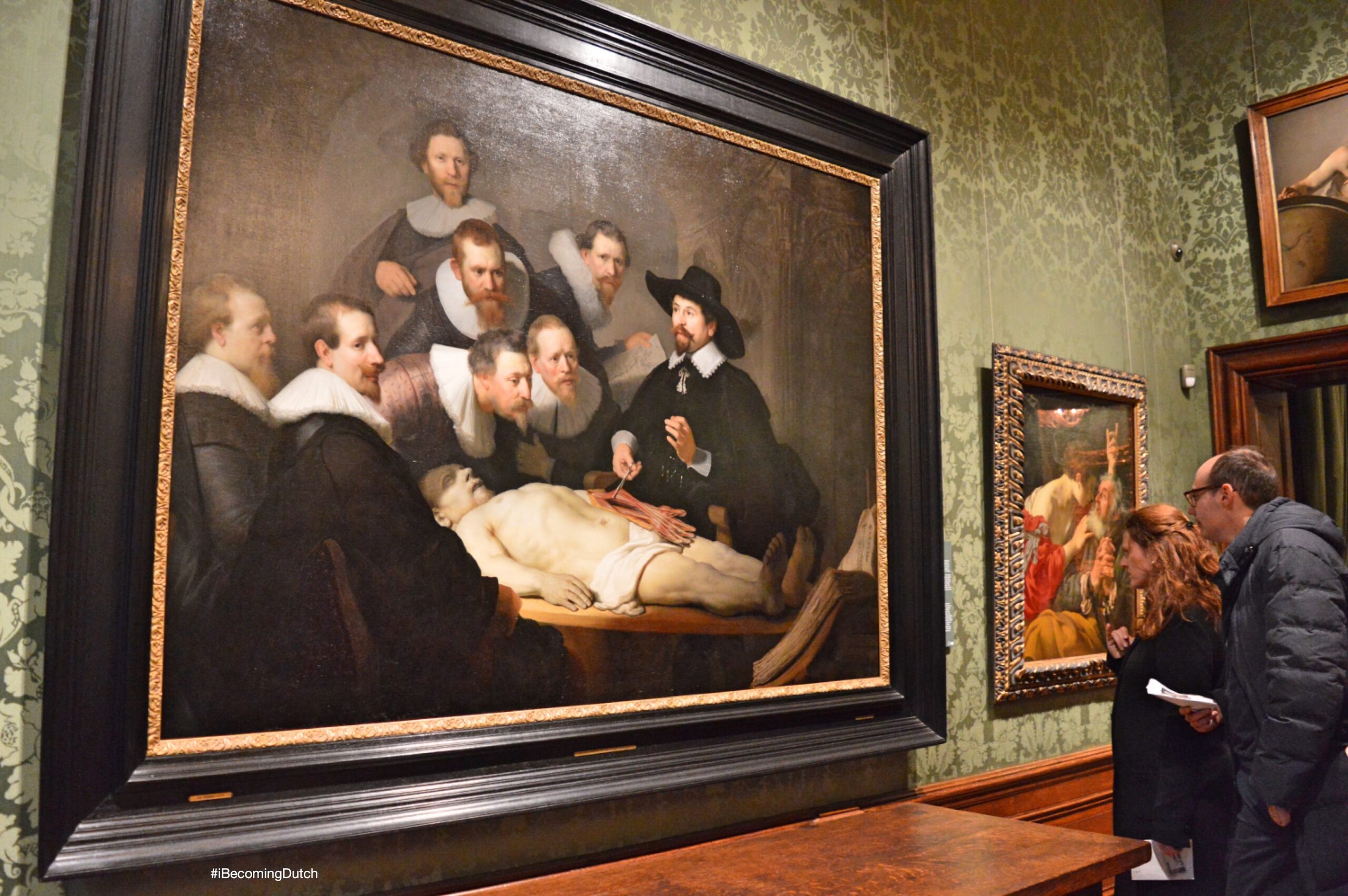 A group portrait of Amsterdam Guild of Surgeons at Dr. Tulp’s anatomy lesson. According to my research, a public dissection was allowed once a year and the body would have to be that of an executed male criminal. Anatomy lessons were social events in the 17th century and the general public were permitted to attend for a fee. The Guild commissioned this group portrait and Rembrandt won this opportunity. A painting I can not forget.
A group portrait of Amsterdam Guild of Surgeons at Dr. Tulp’s anatomy lesson. According to my research, a public dissection was allowed once a year and the body would have to be that of an executed male criminal. Anatomy lessons were social events in the 17th century and the general public were permitted to attend for a fee. The Guild commissioned this group portrait and Rembrandt won this opportunity. A painting I can not forget.
On view in📍Room 9 (painting 146)
- Rembrandt van Rijn – Susanna, 1636.
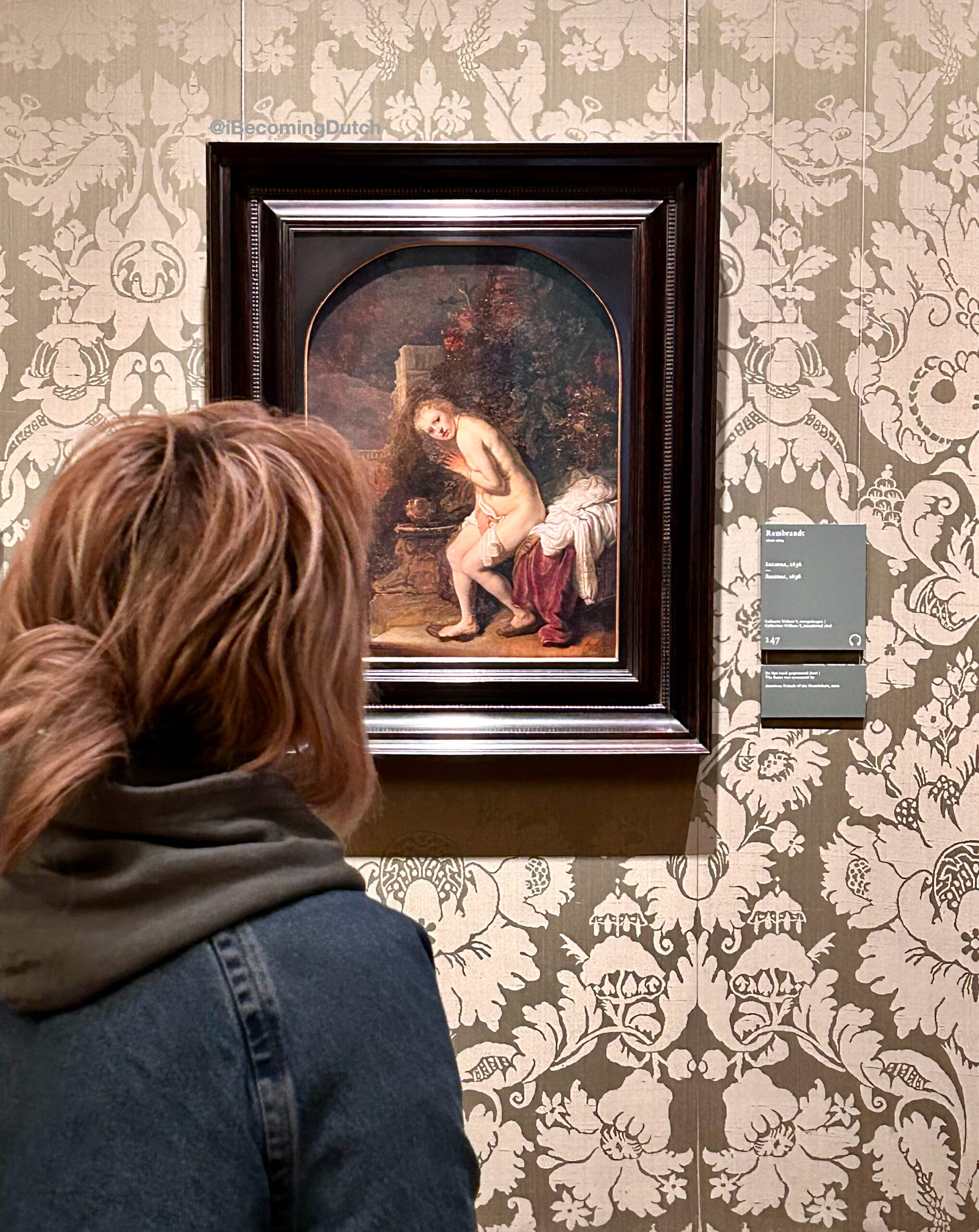 Susanna is portrayed in full light making her appear even more vulnerable in her nakedness. Did you notice she is being spied upon, by a shadow partially visible in the background? Apparently there are two lecherous old men lurking on the right side of the canvas. I could not see clearly.
Susanna is portrayed in full light making her appear even more vulnerable in her nakedness. Did you notice she is being spied upon, by a shadow partially visible in the background? Apparently there are two lecherous old men lurking on the right side of the canvas. I could not see clearly.
On view in📍Room 9 (painting 147)
- Rembrandt van Rijn – Self-Portrait, 1669.
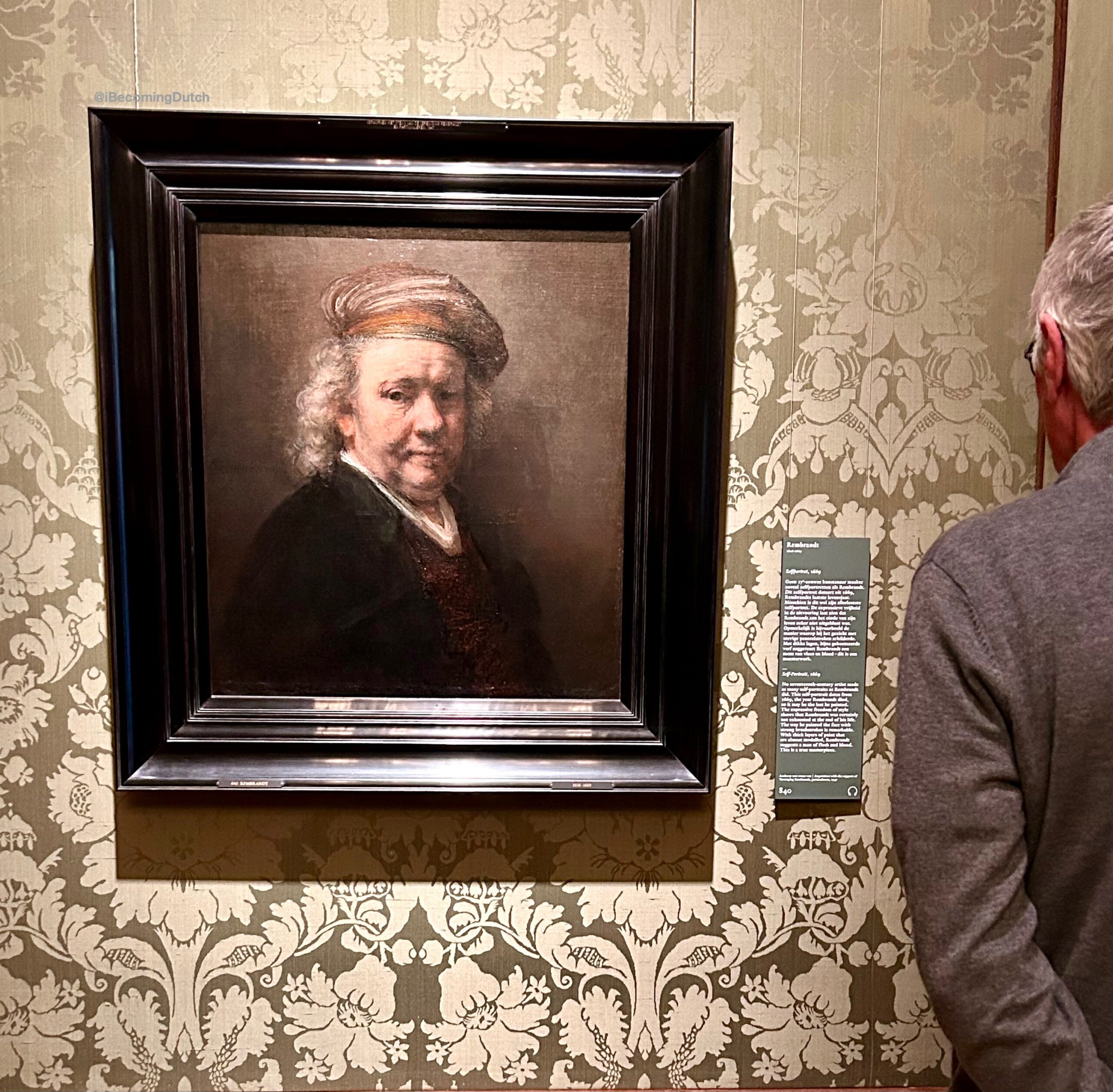 This could be the last self portrait he ever painted, as it dates from 1669, the year when he died. From the master of selfie himself!
This could be the last self portrait he ever painted, as it dates from 1669, the year when he died. From the master of selfie himself!
On view in📍Room 10 (painting 840)
- Jan Breughel the Elder & Peter Paul Rubens – The Garden of Eden with the Fall of Man, c. 1615.
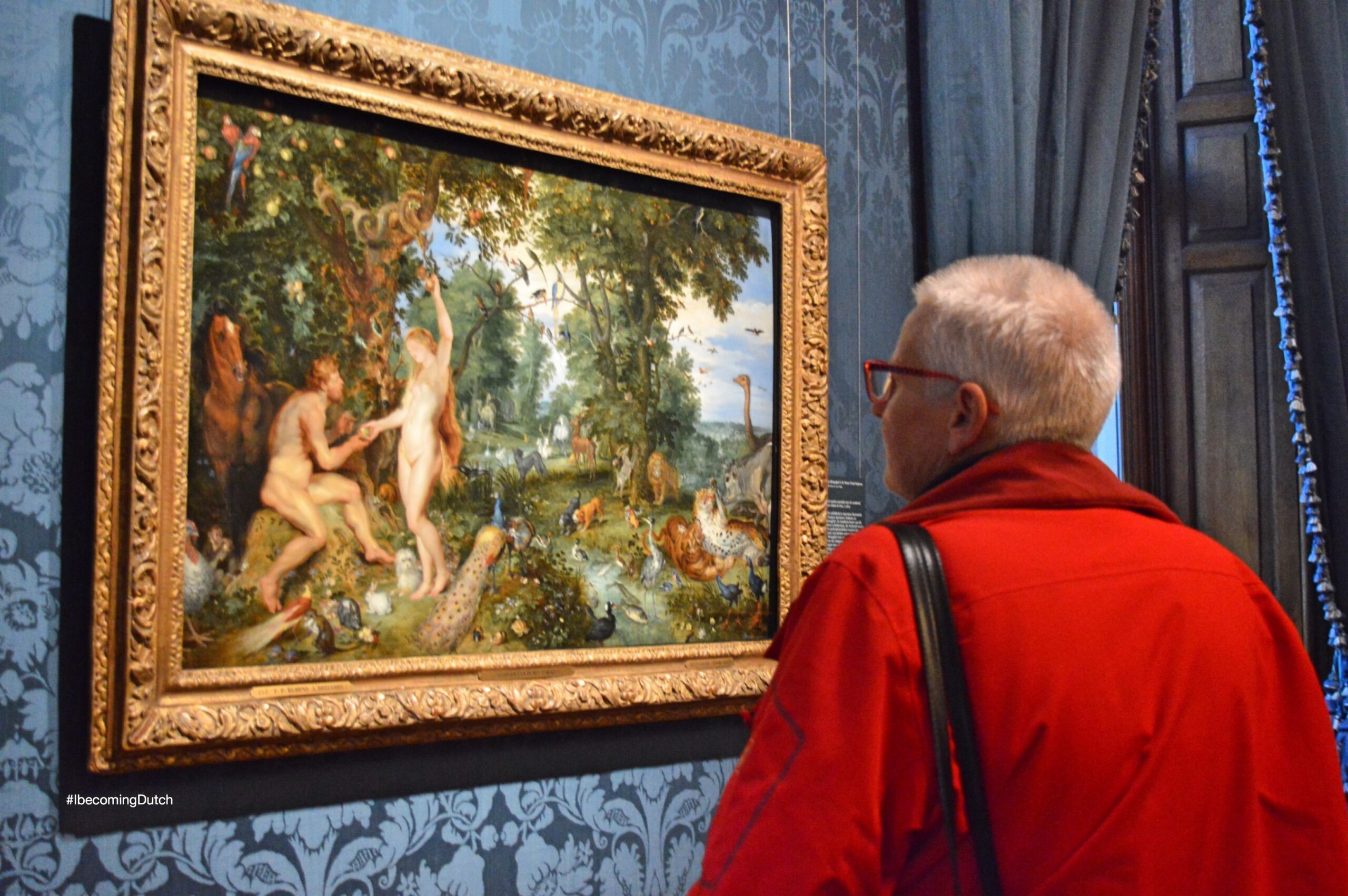 Two Flemish masters on a canvas! Breughel worked on the exotic animals while Rubens worked on Adam and Eve, the tree, the horse and the serpent.
Two Flemish masters on a canvas! Breughel worked on the exotic animals while Rubens worked on Adam and Eve, the tree, the horse and the serpent.
It is the earthly paradise depicting Adam and Eve moments away before the consumption of the forbidden fruit. A truly mesmerizing landscape!
On view in 📍Room 12 (painting 253)
- Willem van Haecht – Apelles Painting Campaspe, c. 1630.
 This is the story of Alexander the Great visiting the studio of Apelles, while the artist is painting the portrait of his mistress Campaspe.
This is the story of Alexander the Great visiting the studio of Apelles, while the artist is painting the portrait of his mistress Campaspe.
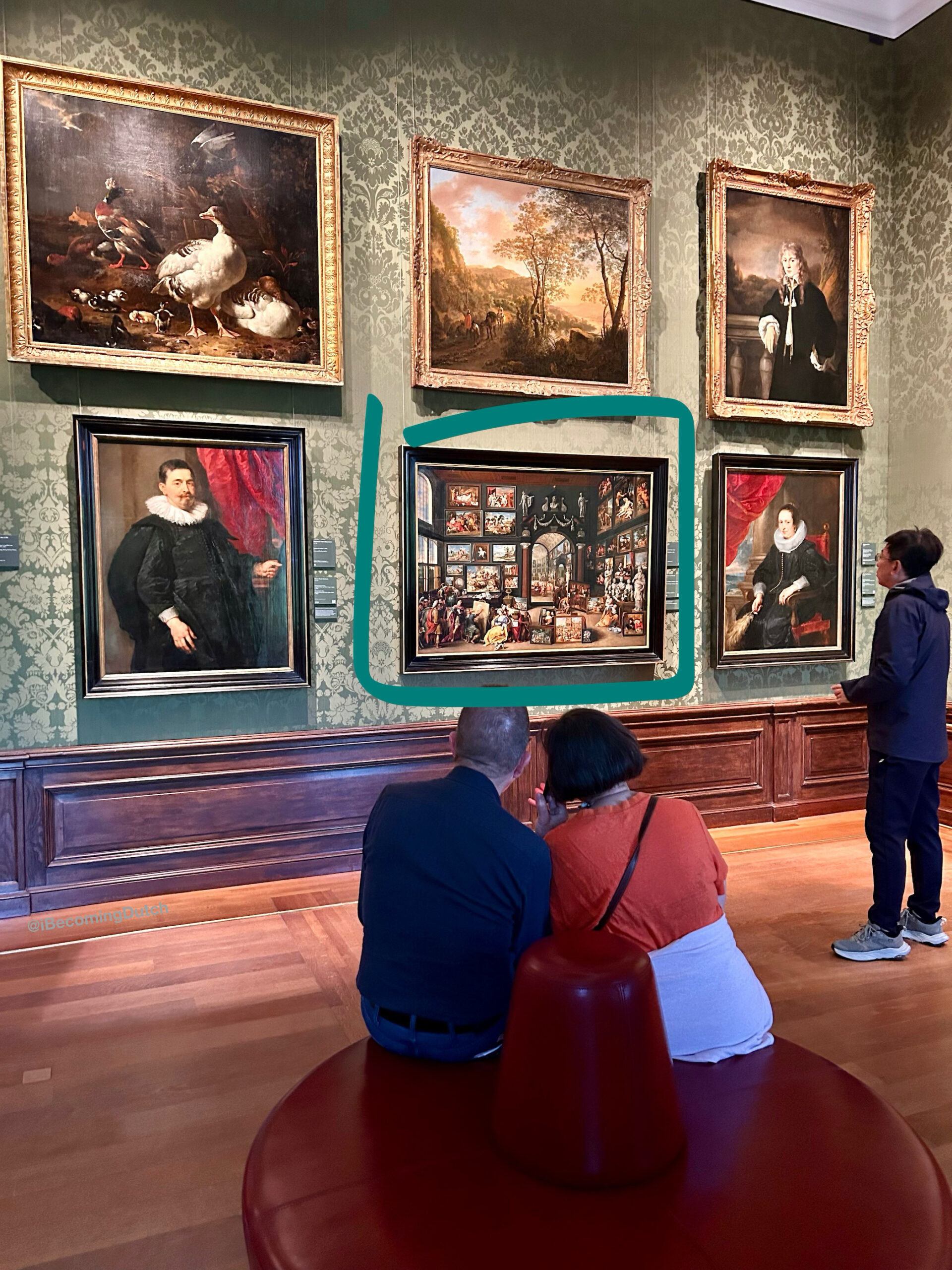
In this painting, the depiction of kunstkamer (picture gallery) interior filled with paintings, statues, architecture elements and further rooms beyond, is very engaging. Just delve into each painting within this painting!
On view in📍Room 12 (painting 266)
- Nicolaes Berchem – Allegory of Spring, Allegory of Summer, Allegory of Autumn & Allegory of Winter, 1670.
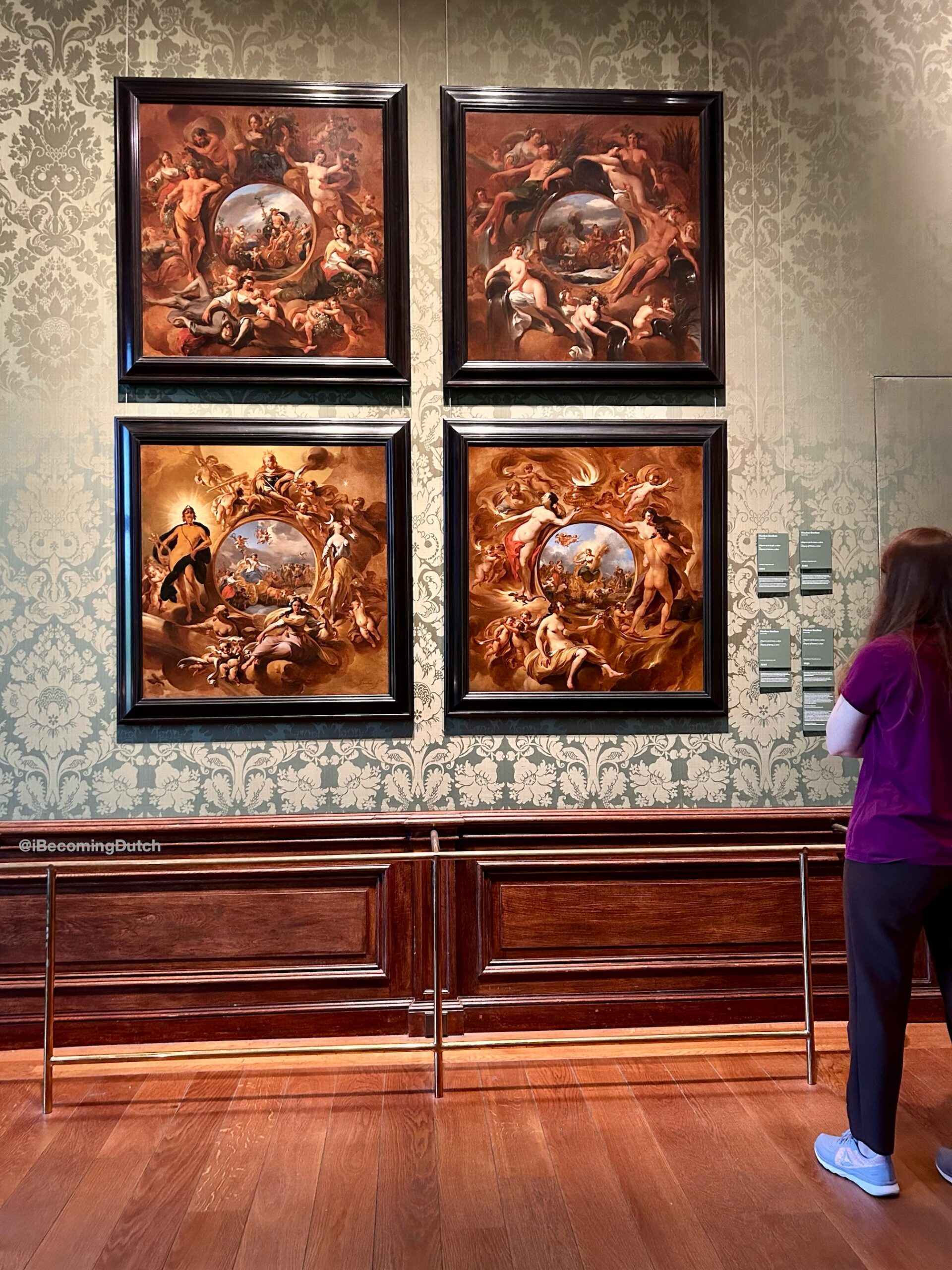 A prolific Dutch Golden Age painter created several allegorical paintings, including this series representing the four seasons, which were originally made to decorate an Amsterdam canal house.
A prolific Dutch Golden Age painter created several allegorical paintings, including this series representing the four seasons, which were originally made to decorate an Amsterdam canal house.
Each painting features a medallion with a chariot carrying the personification of the season. Mesmerizing! On view in📍Room 12 (painting 1091, 1220, 1221, 1222)
- Carel Fabritius, The Goldfinch, 1654.
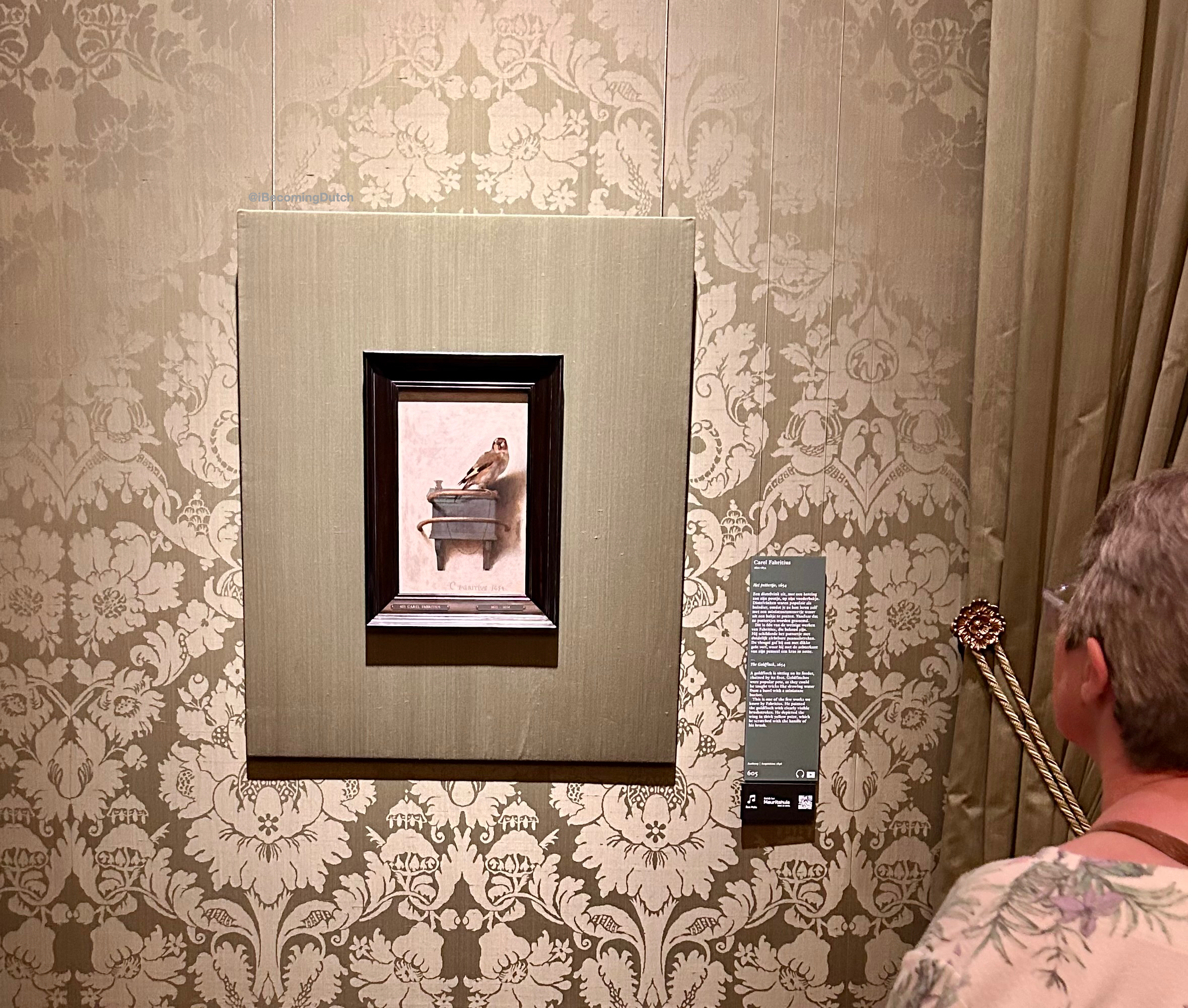 Fabritius was a pupil of Rembrandt who died young in the infamous gunpowder magazine explosion in Delft that destroyed a quarter of Delft in 1654. The Goldfinch is one of his only 11 works that survived the tragedy. This small painting highlights a goldfinch sitting on its feeder, shackled to its perch by a chain. It shot to fame as the subject of Donna Tartt’s novel, which won the Pulitzer Prize for Fiction in 2014 among others. It is absolutely a tiny masterpiece!
Fabritius was a pupil of Rembrandt who died young in the infamous gunpowder magazine explosion in Delft that destroyed a quarter of Delft in 1654. The Goldfinch is one of his only 11 works that survived the tragedy. This small painting highlights a goldfinch sitting on its feeder, shackled to its perch by a chain. It shot to fame as the subject of Donna Tartt’s novel, which won the Pulitzer Prize for Fiction in 2014 among others. It is absolutely a tiny masterpiece!
On view in📍Room 14 (painting 605)
- Johannes Vermeer – View of Delft, c. 1660 – 1661.
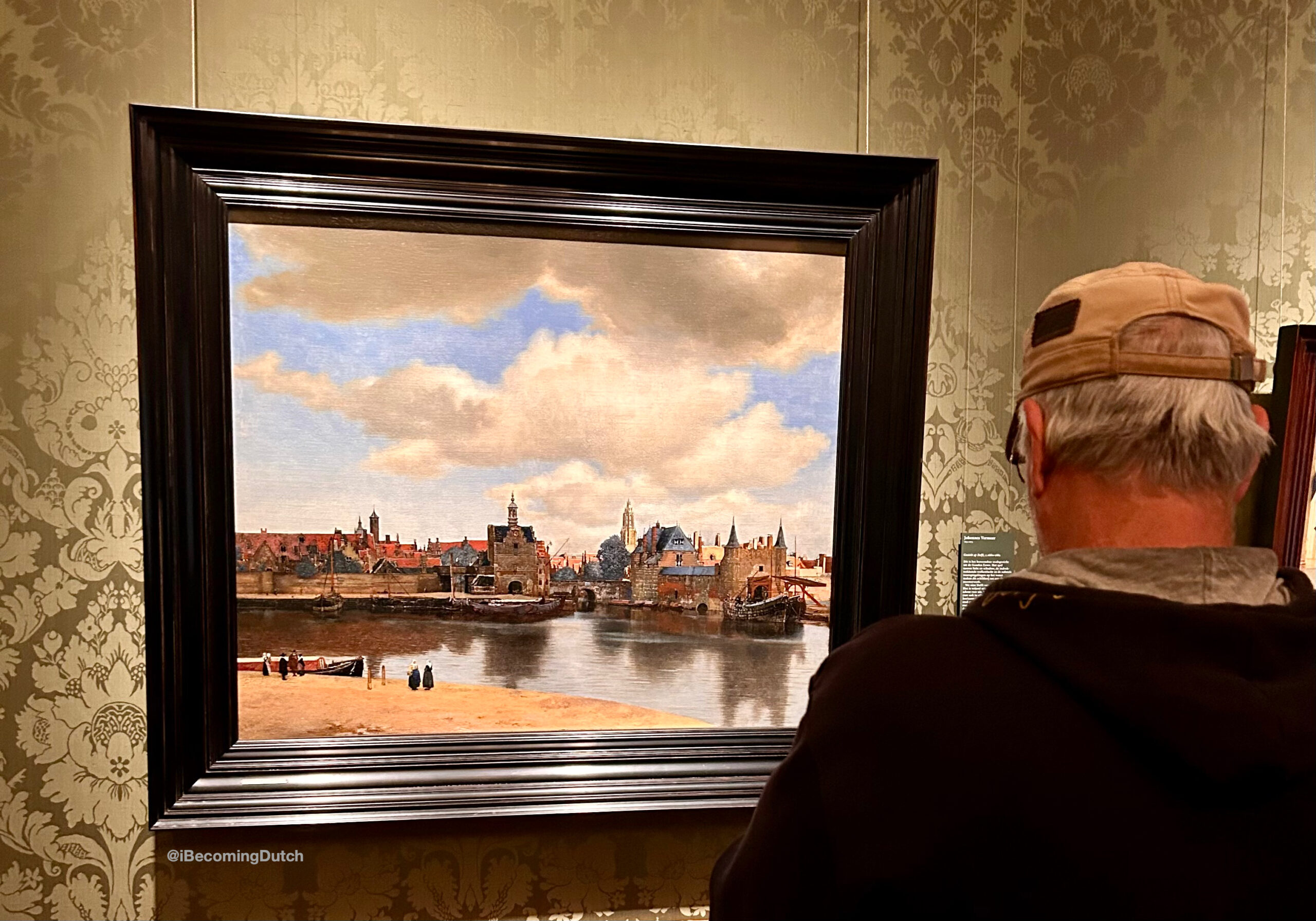 It is renowned as one of the most realistic paintings of the city of Delft. The colorful rooftops skyline and the delicate cityscape reflections on the water created a sense of depth. Not forgetting the ominous clouds above. Typical Dutch weather don’t you think? I know the approximate present day spot where this painting was captured.
It is renowned as one of the most realistic paintings of the city of Delft. The colorful rooftops skyline and the delicate cityscape reflections on the water created a sense of depth. Not forgetting the ominous clouds above. Typical Dutch weather don’t you think? I know the approximate present day spot where this painting was captured.
On view in📍Room 15 (painting 92)
- Johannes Vermeer – Girl with a Pearl Earring, c. 1665.
 Meet the most famous girl in The Hague! Vermeer’s mysterious Mona Lisa; half smiling, half pouting expressive young girl wearing a head scarf and an eye-catching pearl earring. It is a tronie – a painting of an imaginary figure. This painting has been in the collection of the Mauritshuis in The Hague since 1902. She is a sensation!
Meet the most famous girl in The Hague! Vermeer’s mysterious Mona Lisa; half smiling, half pouting expressive young girl wearing a head scarf and an eye-catching pearl earring. It is a tronie – a painting of an imaginary figure. This painting has been in the collection of the Mauritshuis in The Hague since 1902. She is a sensation!
On view in📍Room 15 (670)
- Frans Hals, Laughing Boy, c. 1625.
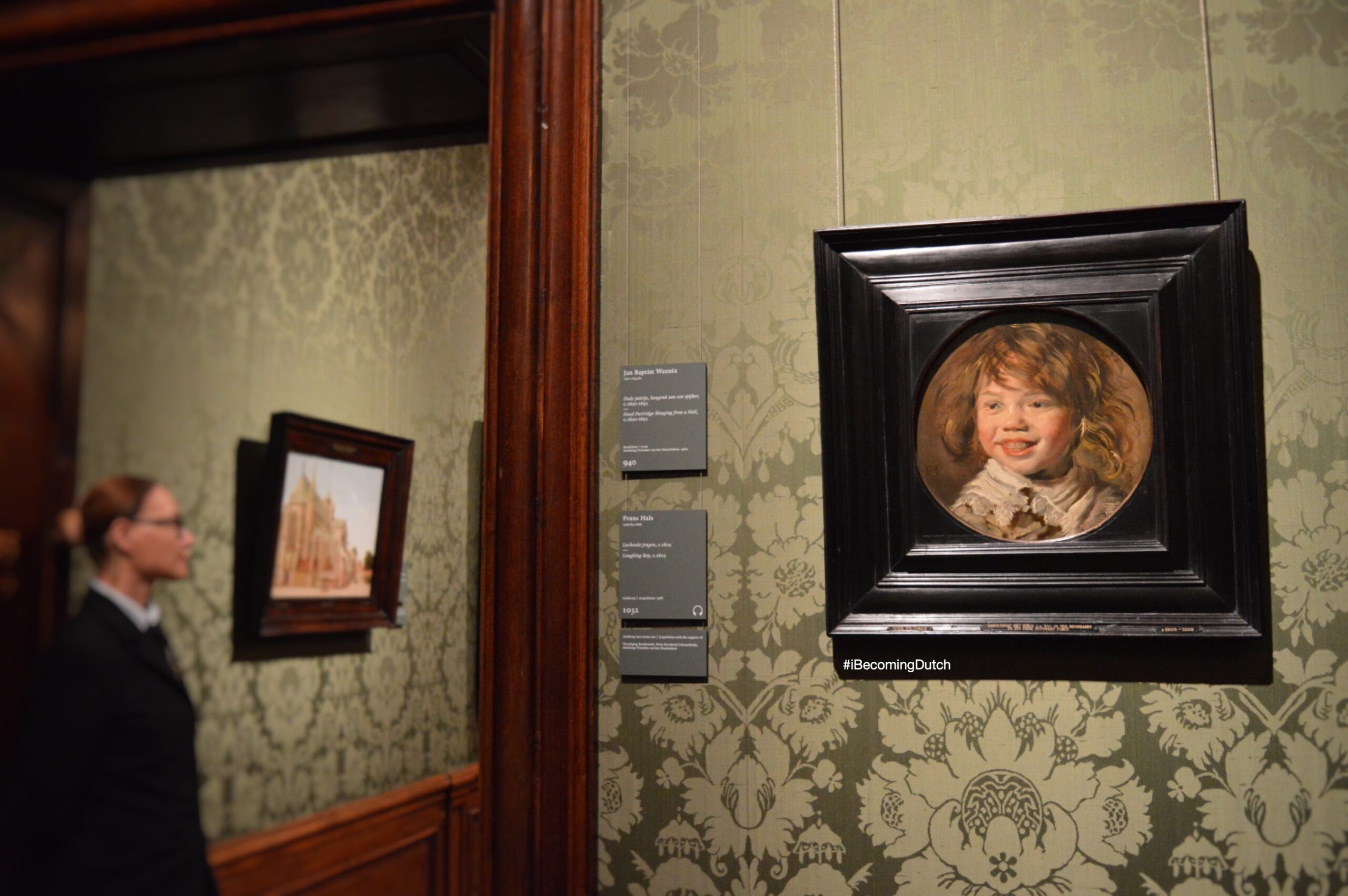 This cheerfully laughing boy circular portrait is not a portrait, but a tronie genre. Laughing figures are unusual and most difficult to capture on canvas. Despite the boy’s messy hair and his mouthful of brown decaying teeth, his sparkly eyes brighten up my mood. A painting full of personality.
This cheerfully laughing boy circular portrait is not a portrait, but a tronie genre. Laughing figures are unusual and most difficult to capture on canvas. Despite the boy’s messy hair and his mouthful of brown decaying teeth, his sparkly eyes brighten up my mood. A painting full of personality.
On view in📍Room 16 (painting 1032)
- Hendrick Avercamp – Ice Scene, c. 1610.
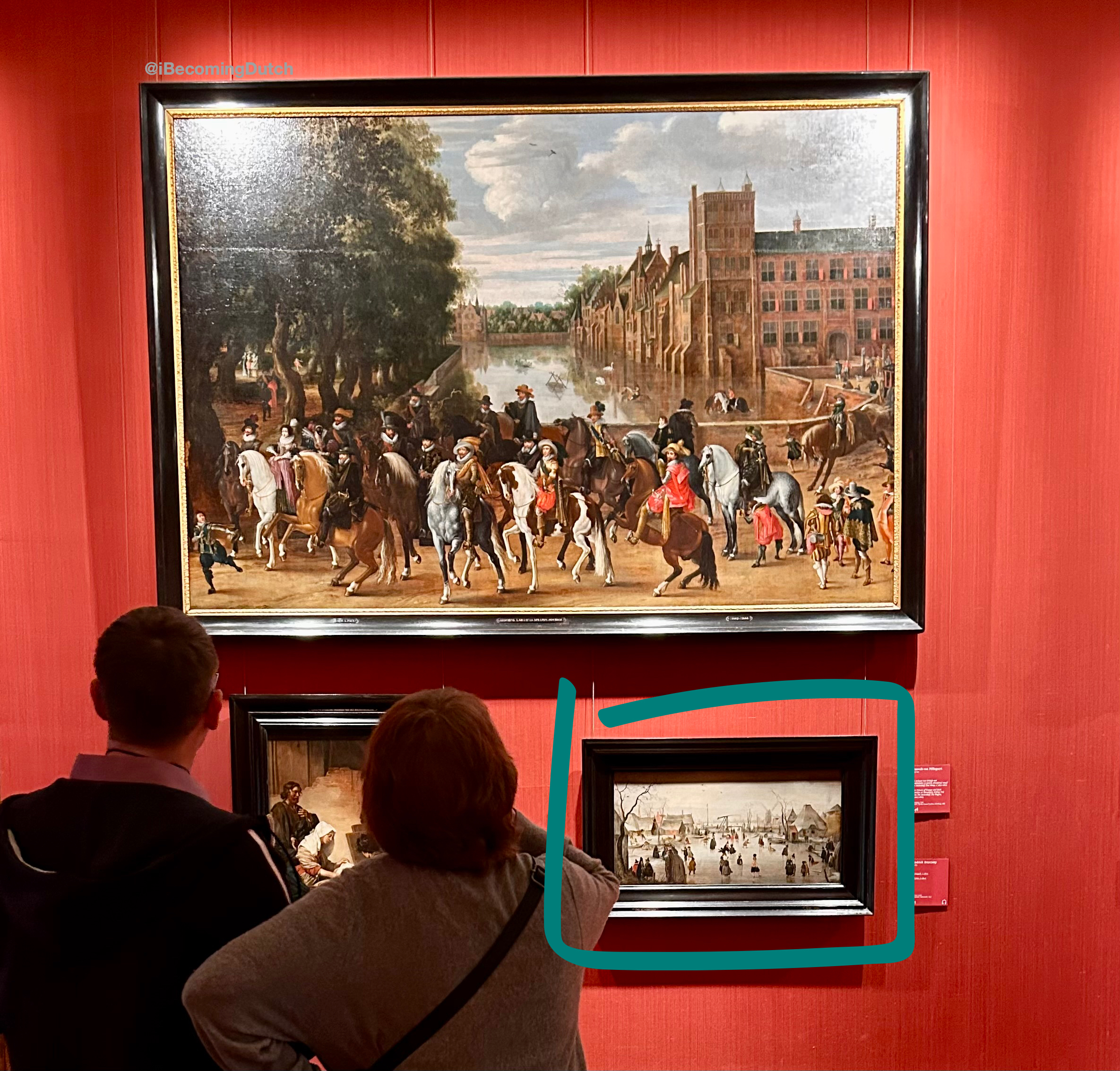 This painting is quintessentially a Dutch winter landscape with its iconic windmills, drawbridge and depiction of life on the canals. A painting full of stories! Can you spot the woman flipping up her skirt in the air as she falls over thus revealing her bare bottom?
This painting is quintessentially a Dutch winter landscape with its iconic windmills, drawbridge and depiction of life on the canals. A painting full of stories! Can you spot the woman flipping up her skirt in the air as she falls over thus revealing her bare bottom?
On view in📍Room 16 (painting 785)
I am not an artist nor do I know much about art. But I do love iconic and famous old paintings. Do not take my word for it and go check out these paintings yourself! With only 16 rooms spread across two floors, it is not difficult to find your way around.
Tip: Download Mauritshuis app audio guide prior to your visit. You are able to browse all the art works on display as you walk through the museum. Don’t forget to bring your earpiece along for convenience!
The Mauritshuis app is available in Dutch and English. The highlight exhibit is also available in German, French, Spanish, Italian, Mandarin, Portuguese and Russian.
Website: https://www.mauritshuis.nl/en/
Address: Plein 29. 2511CS Den Haag.
Opening Hours: Monday from 1pm – 6pm. Tues – Sun from 10am – 6pm.
Entrance Fees: €20.00 for adults and free entry for all under the age of 19 years. Free entry for Museumkaart holders. Cashless museum
Getting There: About 12 minutes walk from Den Haag Central Station.
